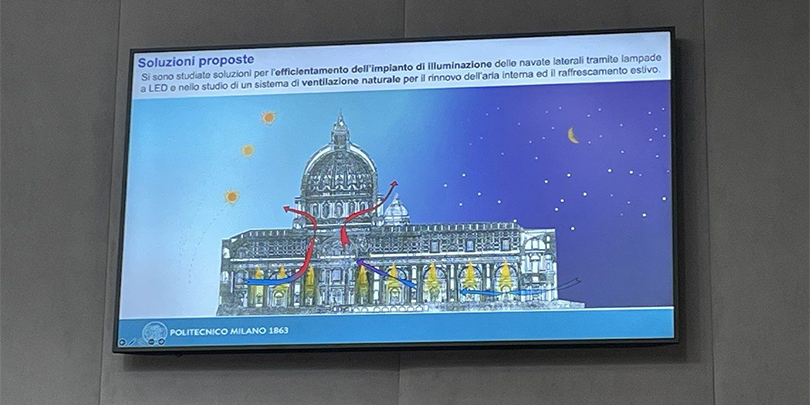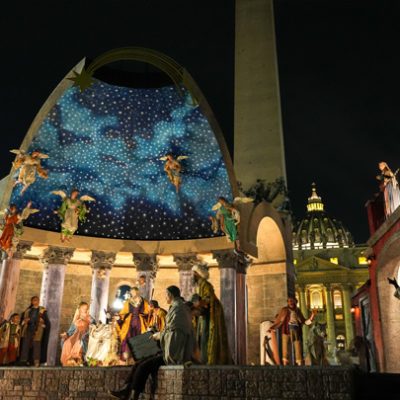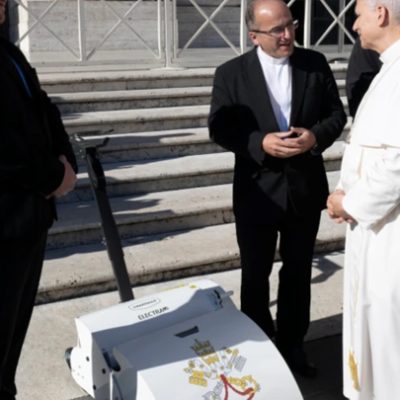
St Peter’s Basilica and some of its surrounding buildings are working to reduce their environmental impact by becoming more energy efficient and promoting sustainability. Source: NCR Online.
The Fabbrica di San Pietro, the office responsible for the basilica’s maintenance, initiated a project in 2022 to reduce the environmental impact of the basilica, which receives an average of 45,000 visitors daily.
A scientific committee set up by the office to create a data-driven plan presented several of its findings and recommendations at a Vatican news conference on Monday.
Cardinal Mauro Gambetti, who has a degree in mechanical engineering and is archpriest of the basilica and president of the Fabbrica, said the project was part of a proactive and constructive form of activism with “a concrete and exemplary commitment to ecological and social transition according to the Church’s social doctrine”.
“I think it is time to show the goodness and foresight of official climate plans,” he said, given the lingering indifference, opposition and lack of attention to today’s climate crisis.
The committee, made up of top engineers and experts in energy, resource management, air quality and more, conducted extensive studies of the basilica, its sacristy, the nearby mosaic studio and the Domus Sanctae Marthae residence.
It looked at possible ways these buildings could reduce their carbon footprint and become more energy efficient.
The committee also produced a study on the indoor air quality of the basilica, which is constantly monitored by high-tech sensors recording levels of CO2, particulates, radon, volatile organic compounds, humidity and pollutants.
It noted that despite the large number of visitors and the use of candles and incense during liturgical events, the air quality remained within acceptable parameters due to the basilica’s enormous size and natural air flows that were projected in the original design of the world’s largest church 500 years ago.
Immediate changes were planned in the sacristy: replacing old radiators with state-of-the-art “water loop systems and the installation of heat pumps,” which should reduce energy consumption between 48 per cent and 57 per cent and emissions between 65 per cent and 72 per cent.
The same is planned for the mosaic studio, including providing LED lighting and giving workers improved ventilation, which will filter out dust and particulates from their work.
FULL STORY
Vatican presents ongoing plans to further reduce carbon footprint (By Carol GLatz, CNS via NCR Online)






